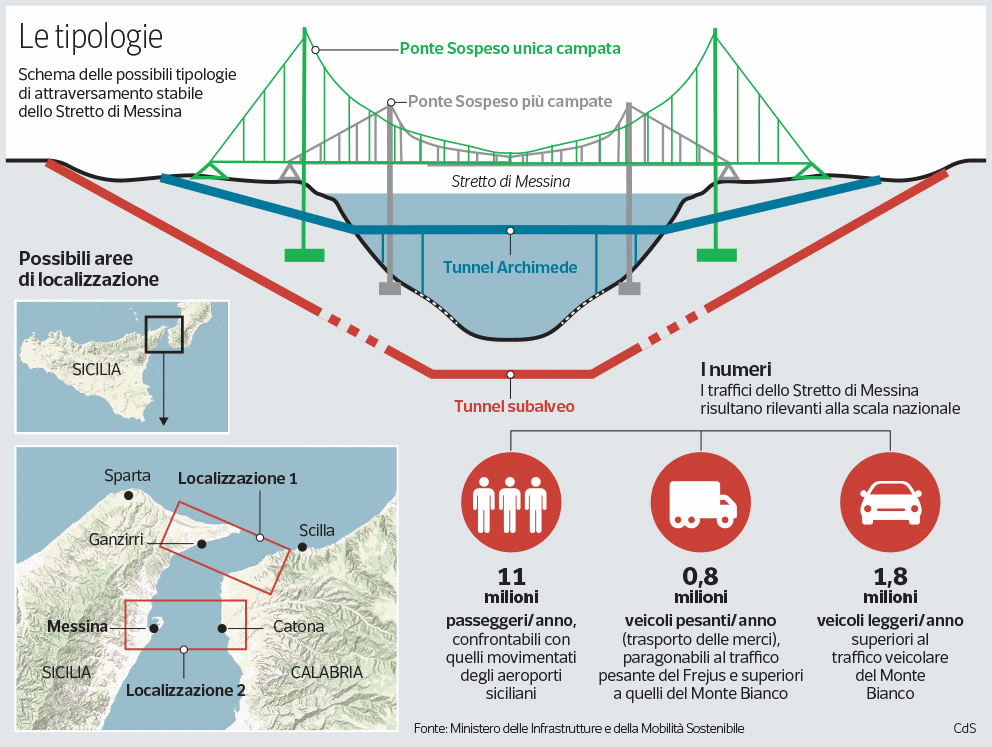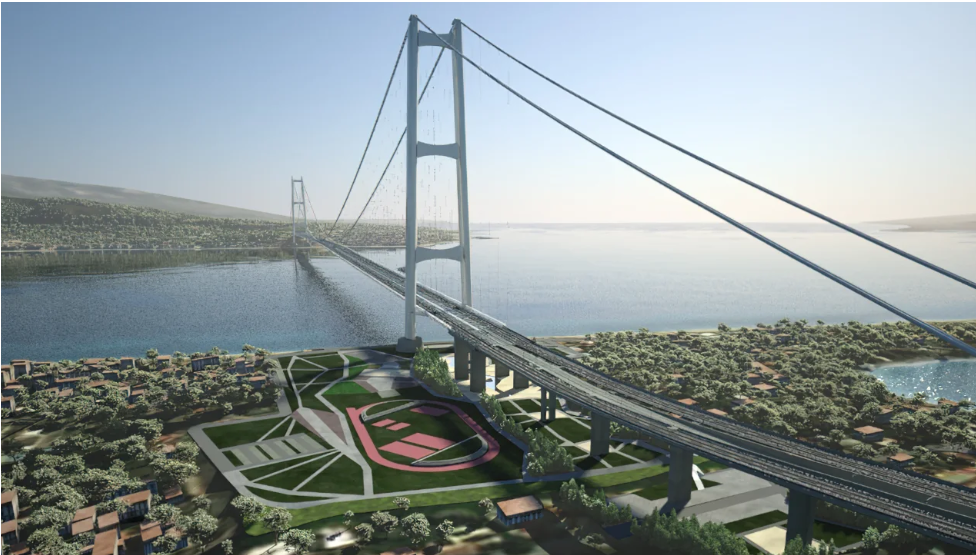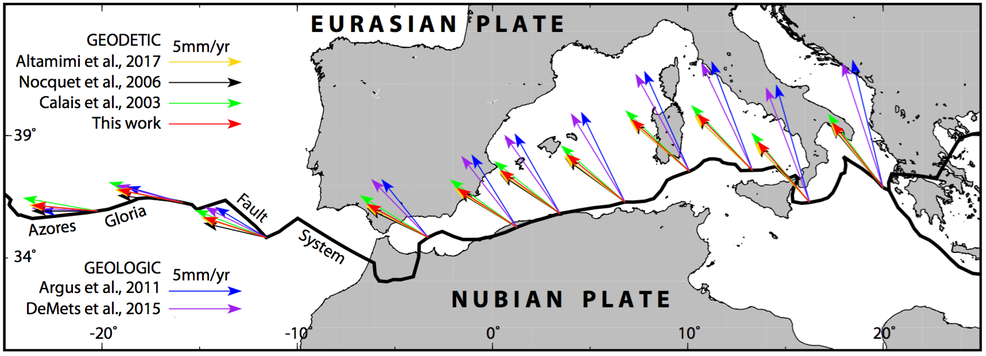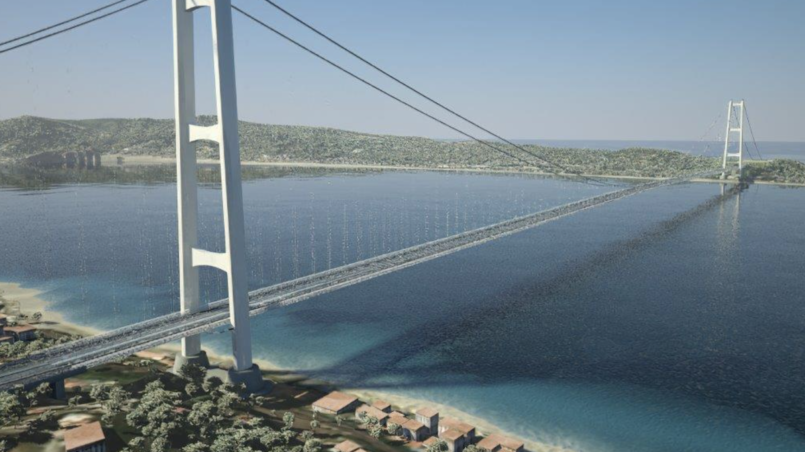Happy Thanksgiving from TheBridgeGuy!
The Strait of Messina has long been an obstacle to transportation and commerce. Hurricane force winds frequent the area, funneled between the island of Sicily and the Italian peninsula. Powerful currents rip through the strait, which is just under 2 miles wide at its narrowest point. The strait is also where the Eurasian tectonic plate meets the Nubian plate, a fault responsible for powerful and destructive earthquakes in the area. With these obstacles, it is no wonder that engineers have yet to span the strait – but that is about to change.

After decades of study and debate, Italy has finally approved financing to build a bridge across the Strait of Messina. The $12.7 billion project will help revitalize the economically depressed southern regions of Italy while creating as many as 100,000 jobs over the next decade. A bridge at the site has been proposed since ancient times, but began to pick up steam in the 1990’s. Since then, the project had been on again and off again. In 2023, the Italian government approved a plan to finally build the long anticipated bridge.

Current plans call for a main span of 10,800 feet, which, if completed, would make the bridge the longest in the world. This would be about 60% longer than the current record holder, the 1915 Canakkale Bridge in Turkey. Overall, the bridge will be 2.2 miles long and feature 1,310 foot tall towers – 60 feet taller than the Empire State Building!
To withstand the high winds, the superstructure will build upon the technology used in the Canakkale Bridge. Canakkale used twin box girders connected by tie bracing, allow lateral load to put the superstructure into either direct tension or compression via strut action. However, Messina will expand this to three boxes, with the center box carrying trains.

To handle seismic loading, the towers will utilize tie beams rather than the typical cross bracing. This will allow a softer response to seismic loading. The bridge’s extreme length will also help with seismic loading. Since the fault follows the strait geometry, the inherent flexibility of the long span will be an advantage.

Construction on the Strait of Messina Bridge is expected to begin in mid-2024 and last into the early 2030’s.







